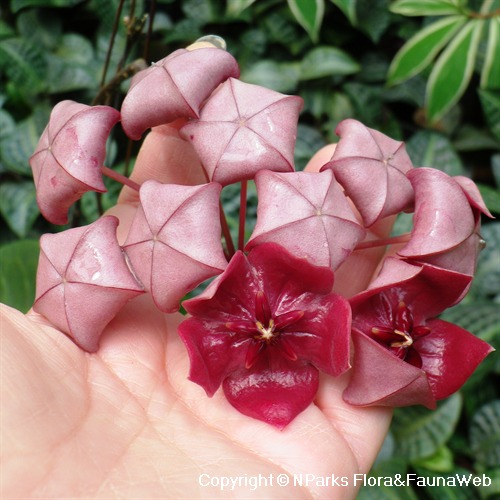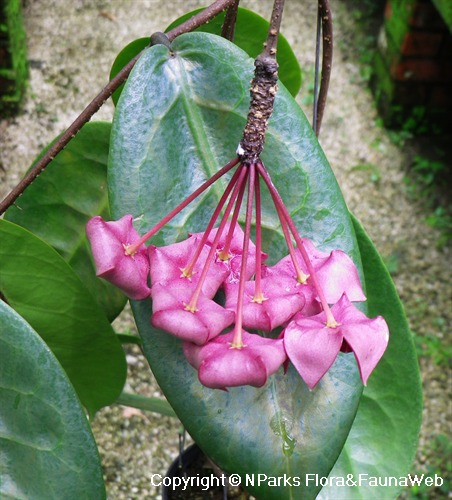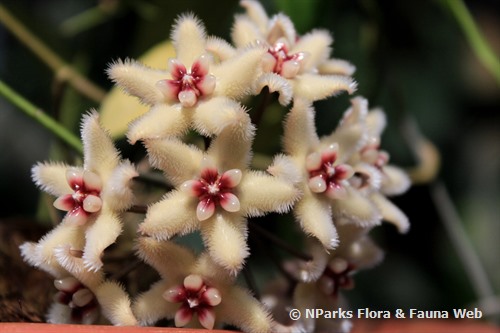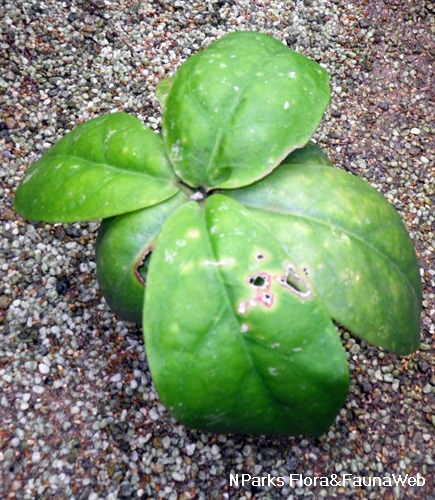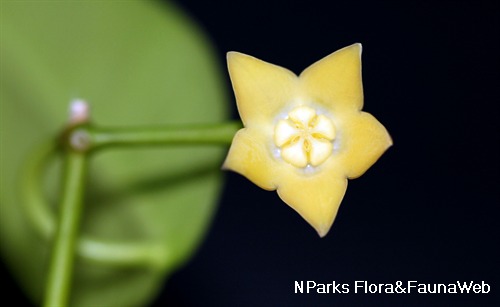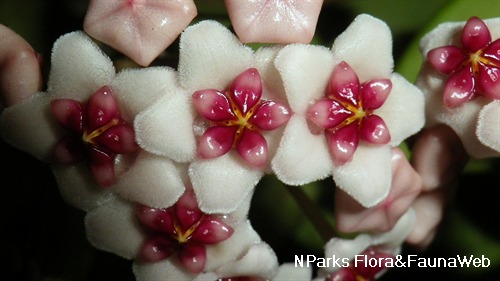
Name
Classifications and Characteristics
| Plant Growth Form | Climber, Epiphyte |
|---|---|
| Lifespan (in Singapore) | Perennial |
Biogeography
| Native Distribution | Papua New Guinea |
|---|
Description and Ethnobotany
| Foliage | Dark green, fleshy leaves are elliptic with entire leaf margin (15 - 17 cm long). Leaves have a smooth, waxy surface. |
|---|---|
| Stems | Thin, weak stems become entangled around nearby structures, like trees. |
| Flowers | Star shaped, dark purplish pink flowers emit a light, rose-like fragrance |
| Cultivation | This species is easy-to-grow and tends to grow quickly. Plant in fertile, well-drained media that is kept moist. It grows well indoors or outdoors, but thrives in a humid environment where it is protected from direct sun. Water and fertilize regularly. |
| Etymology | The genus "Hoya" was named after Thomas Hoy, an English gardener of the early 1800s. |
Landscaping Features
| Desirable Plant Features | Ornamental Flowers |
|---|---|
| Landscape Uses | Container Planting, Suitable for Hanging Baskets |
| Usage Hazard - Cons | Toxic Upon Ingestion |
| Usage Hazard - Cons Remarks | Avoid contact with milky/ white sap as it may cause skin irritation in certain individuals. Keep plants away from children and pets as sap could be toxic. |
Fauna, Pollination and Dispersal
| Pollination Method(s) | Biotic (Fauna) |
|---|
Plant Care and Propagation
| Light Preference | Semi-Shade |
|---|---|
| Water Preference | Moderate Water |
| Rootzone Tolerance | Easy to Grow |
| Pest(s) | Sucking Insects |
| Propagation Method | Stem Cutting |
Foliar
| Foliage Retention | Evergreen |
|---|---|
| Mature Foliage Colour(s) | Green |
| Mature Foliage Texture(s) | Smooth, Glossy / Shiny, Leathery |
Floral (Angiosperm)
| Flower Colour(s) | Red |
|---|---|
| Flower Texture(s) | Waxy |
| Flower Grouping | Cluster / Inflorescence |
| Individual Flower Shape | Stellate / Star-shaped |
| Flowering Period | After Rain |
Image Repository
Others
| Master ID | 30715 |
|---|---|
| Species ID | 5028 |
| Flora Disclaimer | The information in this website has been compiled from reliable sources, such as reference works on medicinal plants. It is not a substitute for medical advice or treatment and NParks does not purport to provide any medical advice. Readers should always consult his/her physician before using or consuming a plant for medicinal purposes. |

